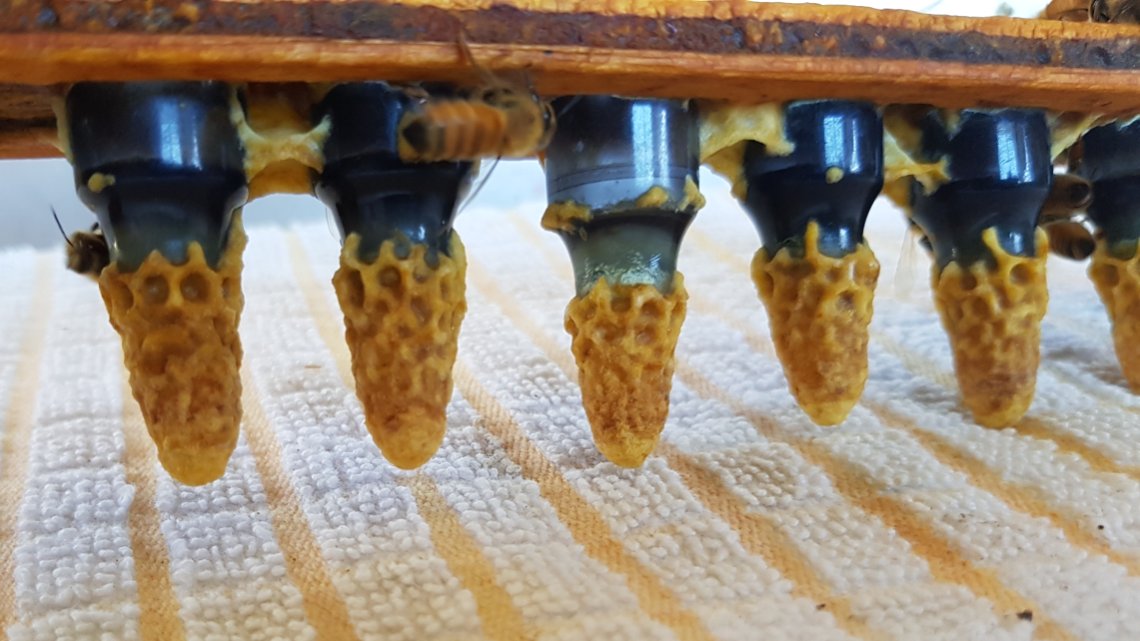
Around the world there are many different breeds of Apis mellifera regularly used in beekeeping operations. New Zealand has very strict controls on the importation of honey and bee products and this extends to genetic material also. As a result of these controls there are currently only 2 recognised breeds of honey bee that are used in New Zealand. These are Italian, and Carnolian Italian queen bees which are by far the most popular. This is partly due to the early introduction of Italian bees to New Zealand and in part due to its suitability to the New Zealand climate and way of beekeeping.
Although these are two distinct breeds that have their own traits that reputable breeders seek to conform to the inability to import genetic material can prove challenging. As such there is a degree of variation in the quality of queen bees produced, which largely depends on the ability of the breeding operation, the skill of the breeder, and their ability to control matings.
Strengths of Italian bees:
- Good spring build up. Italian queen bees provide a good, controlled build up in spring. Colonies that build up too quickly in New Zealand run the risk of being caught out by a cold snap which often occurs. Bee colonies that are slow to build up run the risk of not being at the right strength for the honey flow, unable to take advantage of early flowering nectar sources, and being unable to be fully utilised in spring splits. A controlled spring build up minimizes the risk that changes in the bee hive have occurred between visits that can be detrimental such as swarming or starving.
- Good overwintering. Bee hives that shut down effectively when the weather begins to turn and survive well in winter are very important. Italian bees begin to ramp down new brood production as the weather begins to cool, cluster well and therefore do not consume excessive amounts of stored food over winter. In many cases our Italian
queen bees have a ‘brood break’ in the middle of winter where the queen stops laying for a short period. This is also beneficial in the control of varroa numbers in the hive. - Honey production. The majority of beekeepers, whatever the size, are looking for queen bees and bees that produce good volumes of honey. In many cases honey is the only source of income derived from the hive and getting good volumes is vital to business survival. This is particularly important in New Zealand where honey from specific floral sources (mānuka in particular) is highly valued and sought after. A years worth of work and costs can be wasted if the hive and its bees don’t perform when the honey flow is on.
- Low swarming. All beekeepers want hives that build up well in spring however bees that build erratically or too quickly in spring can cause swarming issues. Italian bees have a reputation of building steadily but not being swarm prone.
As with all livestock the quality of animal can vary wildly depending on the breeding stock, systems and skill of the producer. While it is important to understand the base traits of the breed of queen bee and honey bee that you are running in your operation speaking with your breeder is equally, if not more important. A good breeder should be able to discuss their program and the traits that they are targeting. They should have a feel for what they are doing as well as experience built up over time and exposure to different aspects of the beekeeping industry.
Since their introduction into New Zealand Italian honey bees and queen bees have proved to be well suited and productive throughout the entire country. They are an excellent base from which quality breeders have been able to develop highly productive and effective stock.

